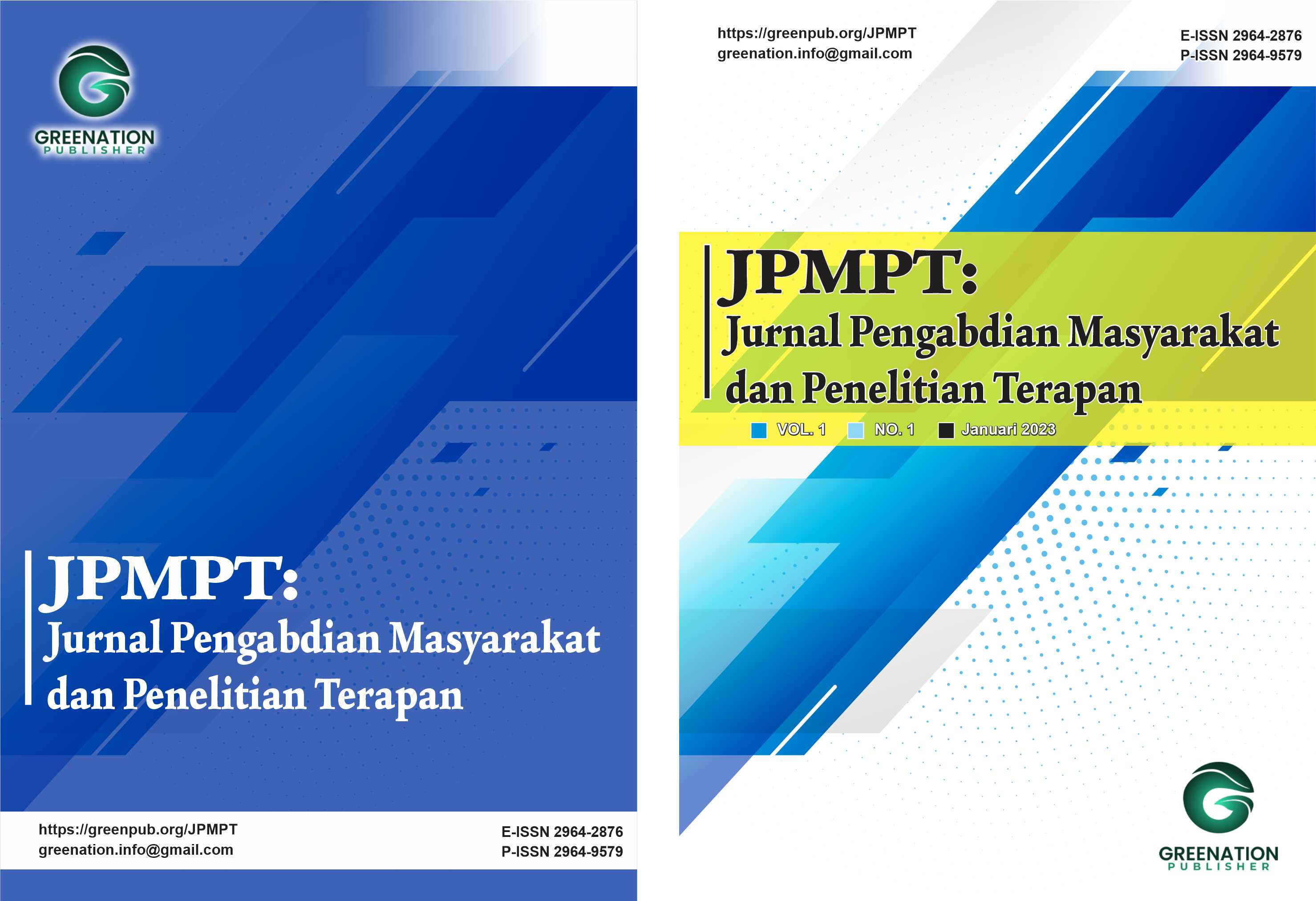Pengaruh Persepsi Risiko, Overconfidence, dan Loss Aversion terhadap Pengambilan Keputusan Investasi Saham (Studi Kasus Generasi Milenial Wilayah Jakarta Barat)
DOI:
https://doi.org/10.38035/jpmpt.v1i3.309Keywords:
Risk Perception, Overconfidence, Loss Aversion, Investment Decision MakingAbstract
Penelitian ini menganalisis pengaruh dari persepsi risiko, overconfidence dan loss aversion terhadap pengambilan keputusan investasi saham di kalangan generasi milenial di Jakarta Barat. Meningkatnya minat berinvestasi menyebabkan meningkatnya minat untuk membeli saham perusahaan atau reksa dana saham sehingga peneliti tertarik untuk meneliti apa saja ysng mempengaruhi keputusan inventasi mereka. Penelitian ini menggunakan metode penelitian kuantitatif, dengan mengumpulkan data melalui kuesioner yang disebarkan kepada generasi milenial di wilayah tersebut. Variabel dependen pada penelitian ini yaitu pengambilan keputusan investasi, dengan variabel independennya yaitu persepsi risiko, overconfidence, dan loss aversion. Persepsi risiko dan overconfidence secara signifikan mempengaruhi investasi saham, sedangkan loss aversion tidak memiliki pengaruh yang signifikan. Temuan ini menunjukkan bahwa generasi milenial semakin tertarik untuk berinvestasi karena semakin mudah dan nyamannya membeli dan menjual saham.
References
Ahmad, M., Zulfiqar, S., & Shah, A. (2020). Overconfidence heuristic-driven bias in investment decision-making and performance?: mediating effects of risk perception and moderating effects of financial literacy.
Fathihani. (2020). Authentic Happiness As a Mediator of Learning Organization. 2(1), 112–124. https://doi.org/10.31933/DIJMS
Hikmah, & Rustam, T. ananda. (2020). Pengetahuan nvestasi, Motivasi Investasi, Literasi Keuangan dan Persepsi Resiko Pengarugnya Terhadap Minat Investasi Pada Pasar Modal. Junal Manajemen Dan Keuangan, 8(November), 131–140.
KSEI. (2022). Didominasi Milenial dan Gen Z, Jumlah Investor Saham Tembus 4 Juta. PT Kustodian Sentral Efek Indonesia, 1–2.
Saraswati, H. (2022). Kesadaran investasi generasi milenial di DKI Jakarta Indonesia. Akuntabel, 19(2), 357–365. https://doi.org/10.30872/jakt.v19i2.10935
Septi, N., Ainia, N., & Lutfi, L. (2019). The influence of risk perception , risk tolerance , overconfidence , and loss aversion towards investment decision making. 21(3), 401–413.
Siti, B., Hidayati, A., Bintang, S., & Putra, M. (2021). Pengaruh Pengetahuan Investasi , Manfaat Investasi , Motivasi Investasi , Modal Minimal Investasi Dan Return Investasi Terhadap Minat Investasi Di Pasar Modal ( Studi pada Mahasiswa Fakultas Ekonomi dan Bisnis Universitas Mataram ) Latar Belakang Pasar mo. 9(1).
Syed Zulfiqar Ali Shah, Maqsood Ahmad, F. M. (2018). Heuristic biases in investment decision-making and perceived market e ffi ciency A survey at the Pakistan stock exchange. https://doi.org/10.1108/QRFM-04-2017-0033
Zat, M. I. R., & Khan, U. (2017). Impact of availability bias and loss aversion bias on investment decision making , moderating role of risk perception. 1(1), 17–28.
Downloads
Published
Issue
Section
License
Copyright (c) 2023 Rahmat Ilahi , Fathihani Fathihani, Riki Aprianto

This work is licensed under a Creative Commons Attribution 4.0 International License.
Hak cipta :
Penulis yang mempublikasikan manuskripnya di jurnal ini menyetujui ketentuan berikut:
- Hak cipta pada setiap artikel adalah milik penulis.
- Penulis mengakui bahwa Jurnal Pengabdian Masyarakat dan Penelitian Terapan (JPMPT) berhak menjadi yang pertama menerbitkan dengan lisensi Creative Commons Attribution 4.0 International (Attribution 4.0 International CC BY 4.0) .
- Penulis dapat mengirimkan artikel secara terpisah, mengatur distribusi non-eksklusif manuskrip yang telah diterbitkan dalam jurnal ini ke versi lain (misalnya, dikirim ke repositori institusi penulis, publikasi ke dalam buku, dll.), dengan mengakui bahwa manuskrip telah diterbitkan pertama kali di JPMPT.



























